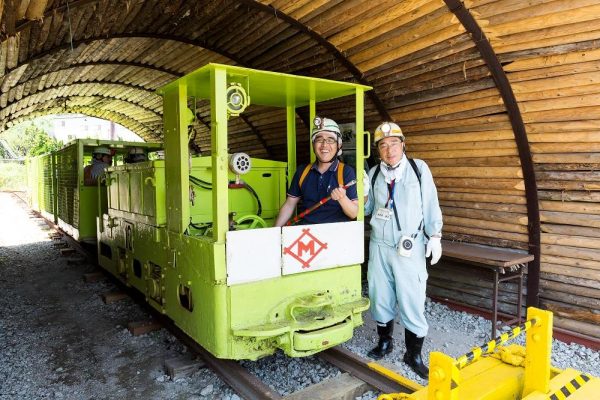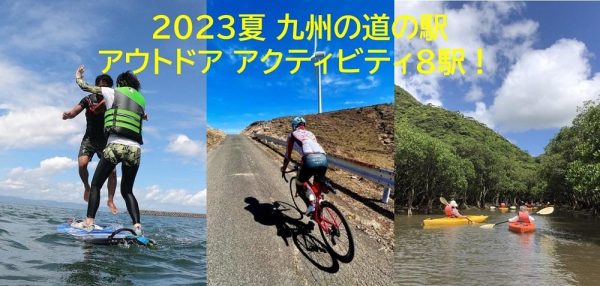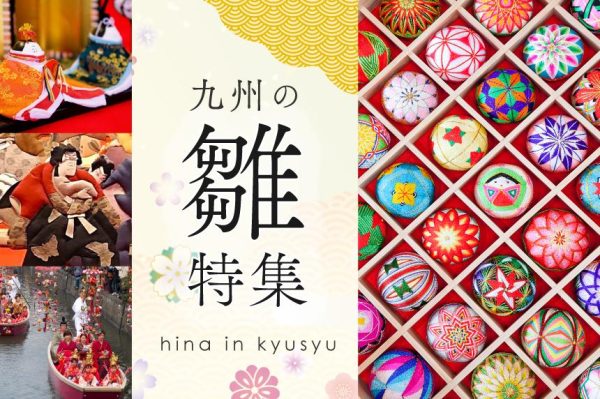There are skipjack swimming in the sky⁉A stroll in the town of Makurazaki
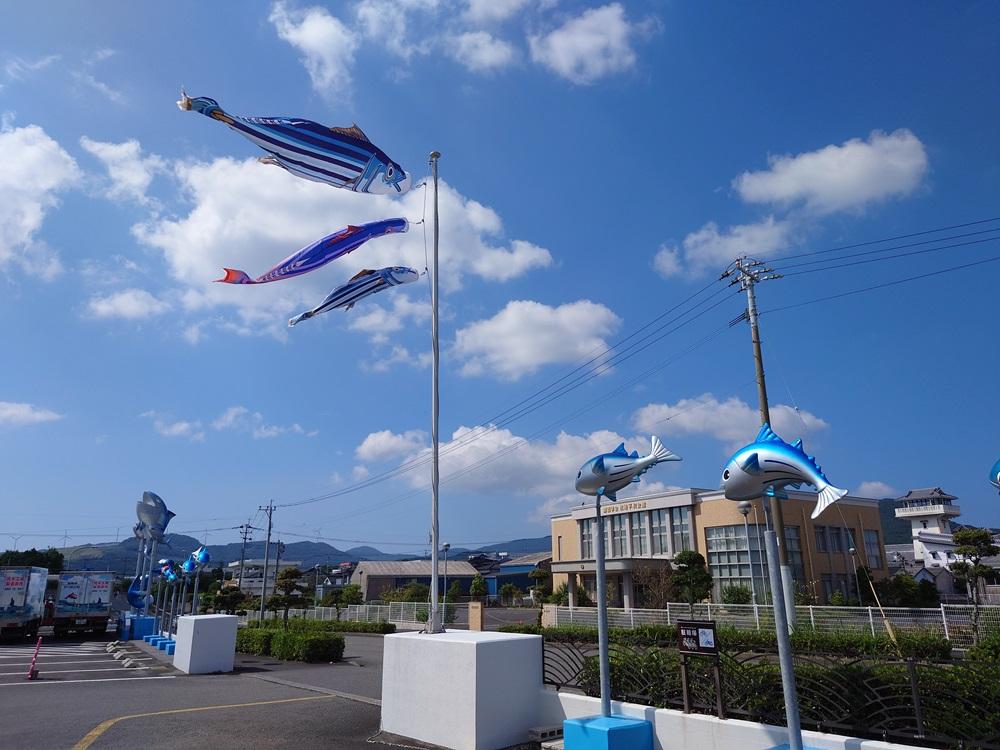
Is there a skipjack swimming in the sky? Take a stroll in Makurazaki
Makurazaki City in Kagoshima Prefecture boasts the highest quantity and quality of dried bonito flakes in Japan. Located at the southern tip of the Satsuma Peninsula, facing the East China Sea, the city with a population of about 20,000 is a city that depends on dried bonito flakes. Eighty percent of the seafood processing industry is made up of dried bonito flakes. Walking around the town, you will see the signboard with the logo "Makurazaki katsuobushi" and smell the aroma of dried bonito flakes. And are there bonito swimming in the sky? Let's take a stroll in Makurazaki.
Bonito streamers and bonito objet d'art The history of bonito flakes is also casually displayed.
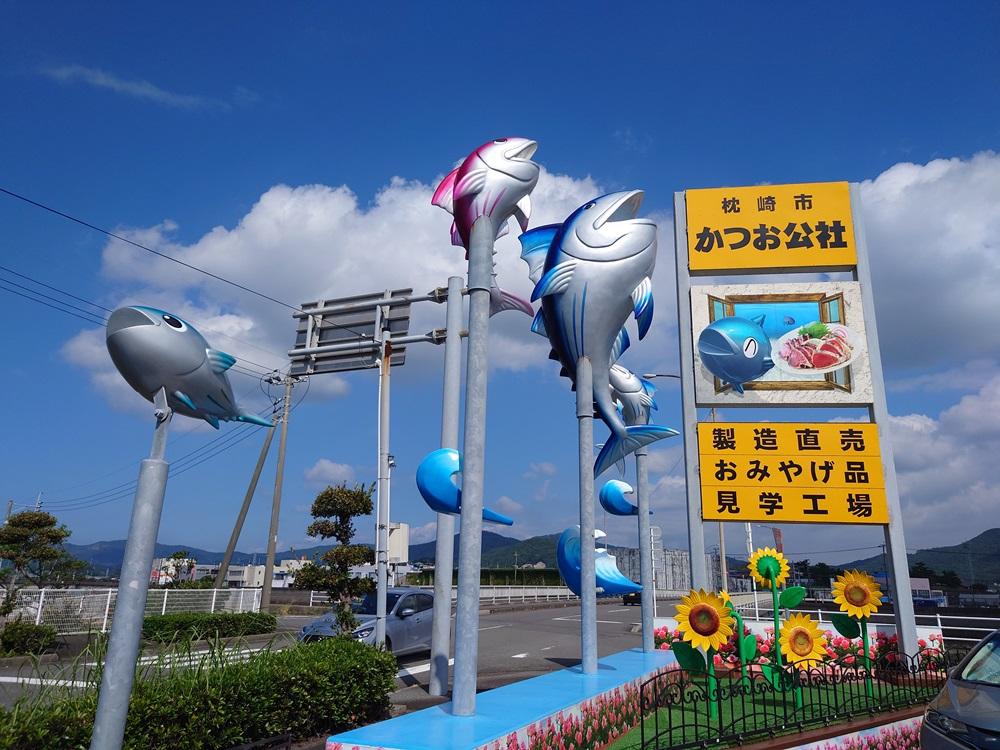
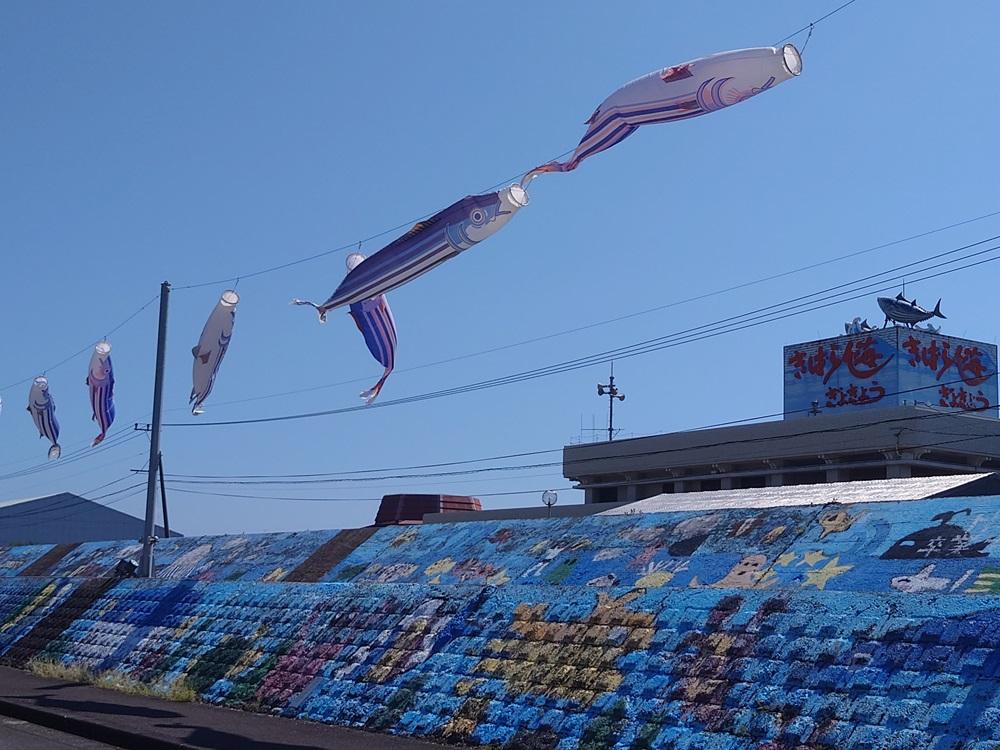
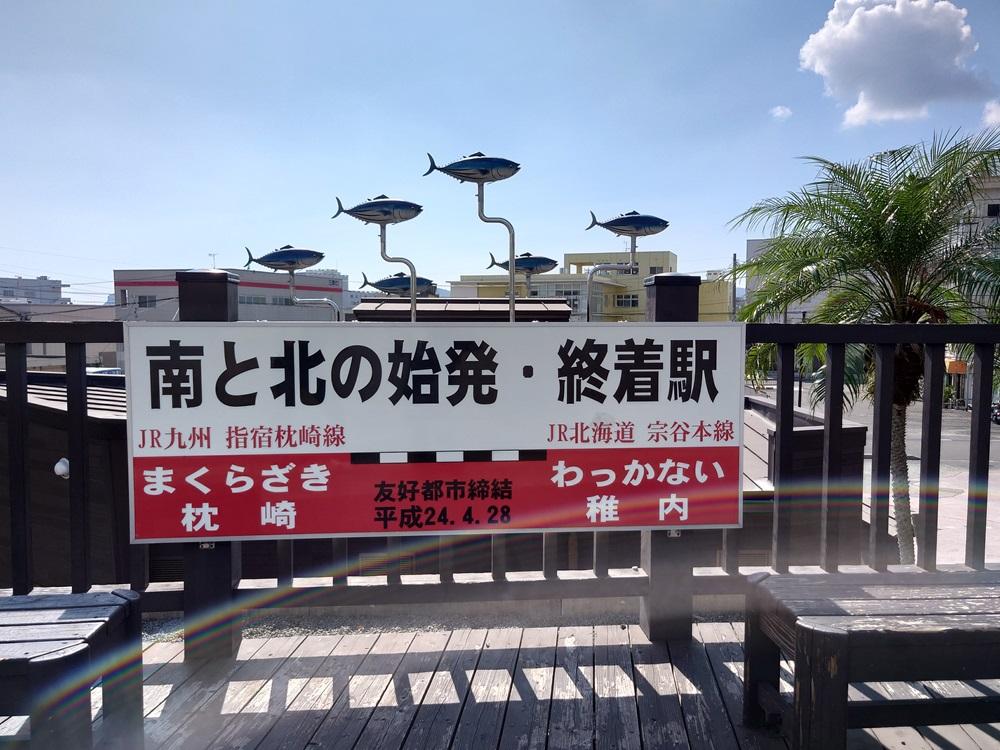
Makurazaki began producing dried bonito flakes in the middle of the Edo period, at the beginning of the 18th century. Although it lagged behind Tosa, Kishu, and Yakushima, also in Satsuma, Makurazaki invited craftsmen from Kishu and improved its fishing boats and fishing methods, growing into a major producer of dried bonito flakes. After the Meiji era (1868-1912), the fishing ports were modernized, and the fishing of bonito in the southern seas was promoted, making the area the best in Japan in terms of both quantity and quality. Currently, there are 45 companies in the katsuobushi producer's association.
Walking along Prefectural Route 32 along Makurazaki Fishing Port, you will see bonito sculptures at the Makurazaki Fish Center, the town's product center, and the Makurazaki City Bonito Public Corporation, a publicly owned place that sells processed bonito products. Even the rooftop of a fishing cooperative has a bonito sculpture, and the platform of Makurazaki Station also has a bonito sculpture. The bonito streamers fluttering at the entrance and exit of the Makurazaki City Bonito Public Corporation and on the embankment of the fishing port are not carp streamers, but bonito streamers. Moreover, bonito streamers are flown all year round.
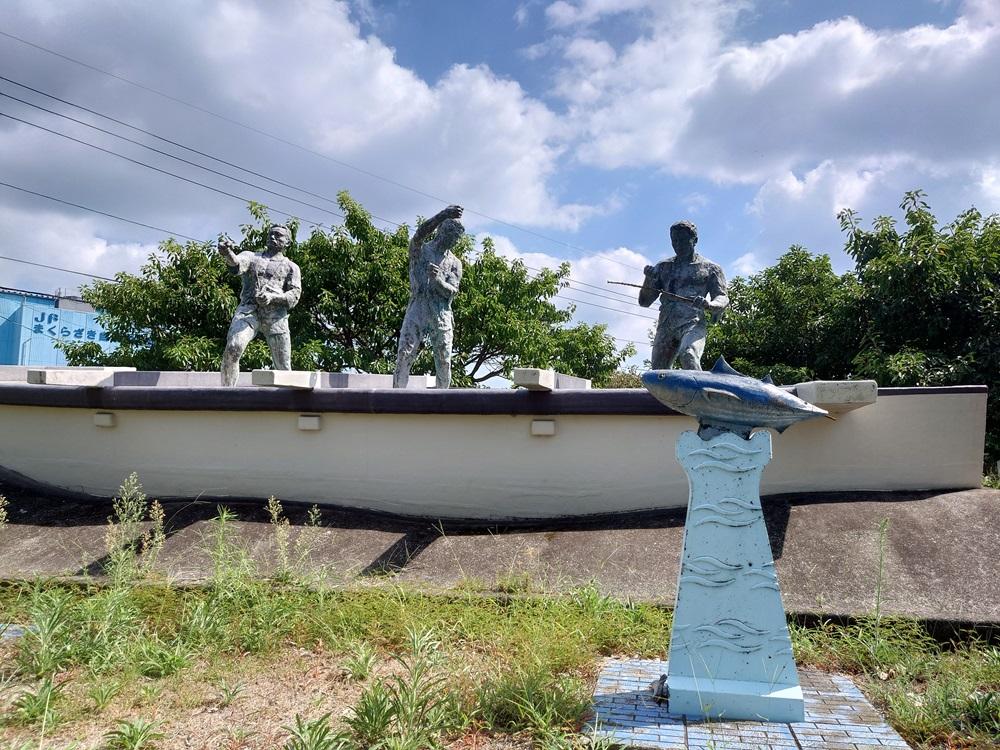
If you go to Fishing Port Hara Park, you will also find a bonito sculpture and a statue of a "group of fishermen" there. The statue of a group of fishermen is said to represent skipjack fishing in the Meiji era (1868-1912). On the opposite side stands a statue of a mother and three children peddling bonito flakes. The statue looks somewhat sad, probably due to age-related deterioration. It is no wonder, then, that more than 700 fishermen died in Makurazaki and its vicinity when a typhoon sank their fishing boat in 1895. A mother and her son, who had lost their mainstay, began peddling dried bonito flakes. They sold dried bonito flakes all over southern Kyushu, asking, "Do you want some dried bonito flakes? This was also the beginning of the spread of Makurazaki's dried bonito flakes. A bronze statue with the same motif can be seen in the plaza in front of Makurazaki Station. Makurazaki City would not be complete without bonito fishing and dried bonito flakes.
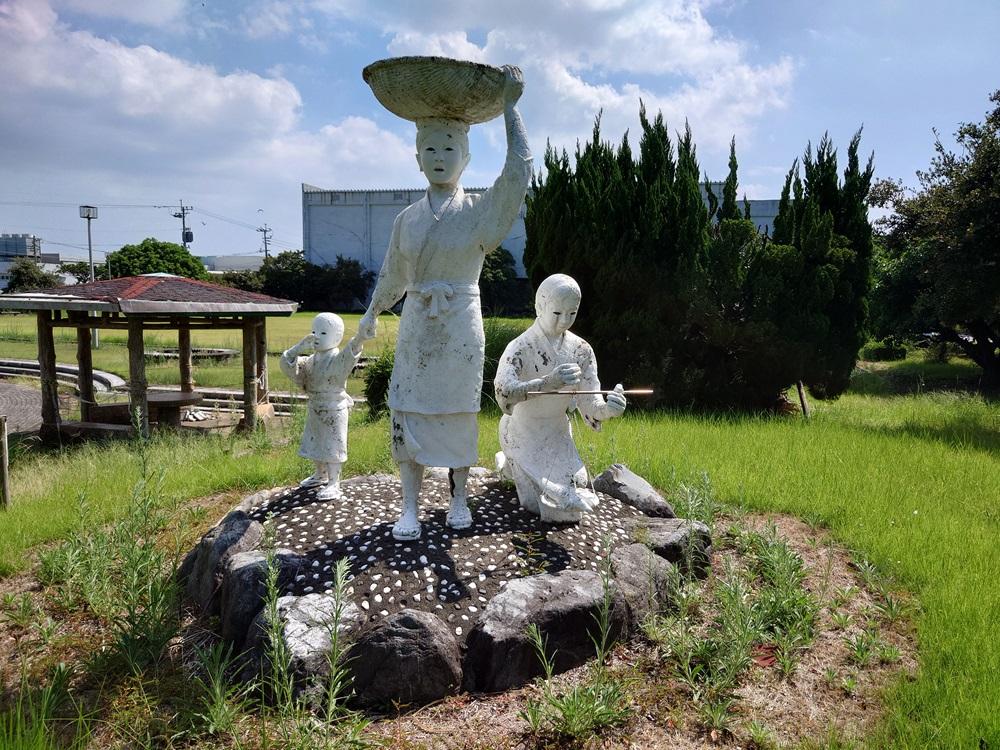
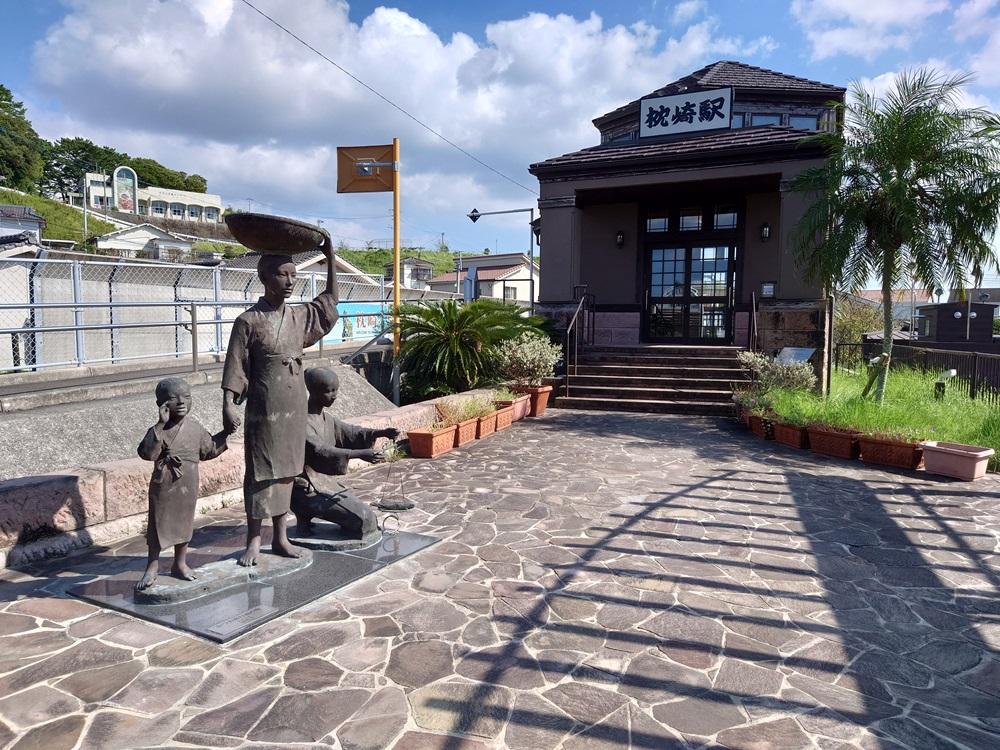
Not Just a Bonito Objet, Makurazaki City is a City of Blue Sky Museums
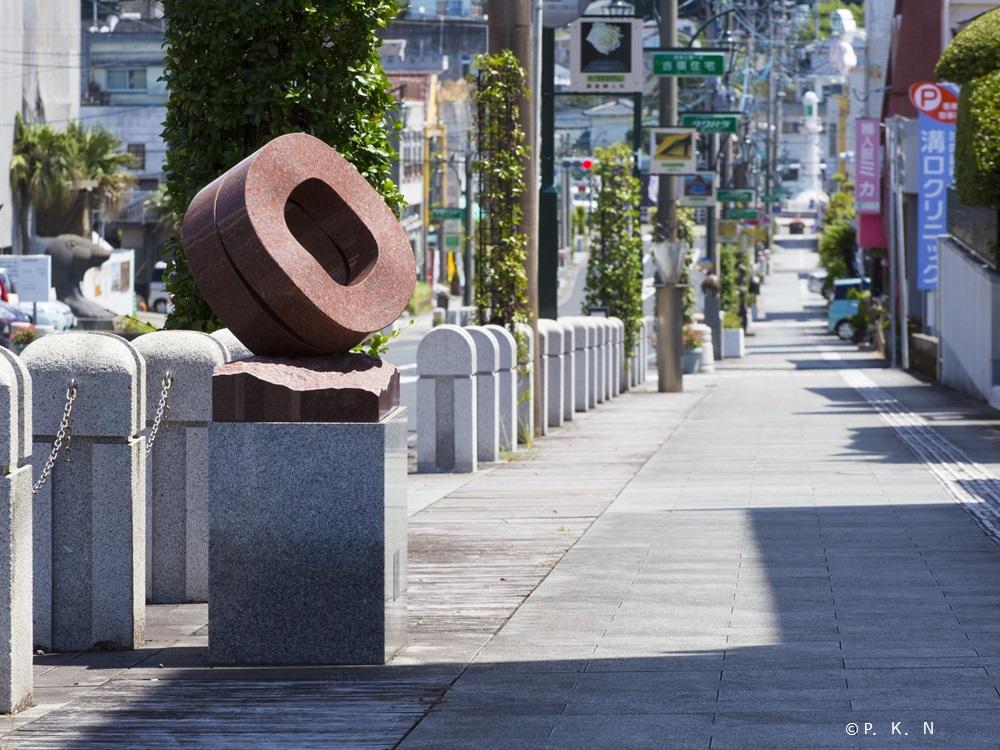
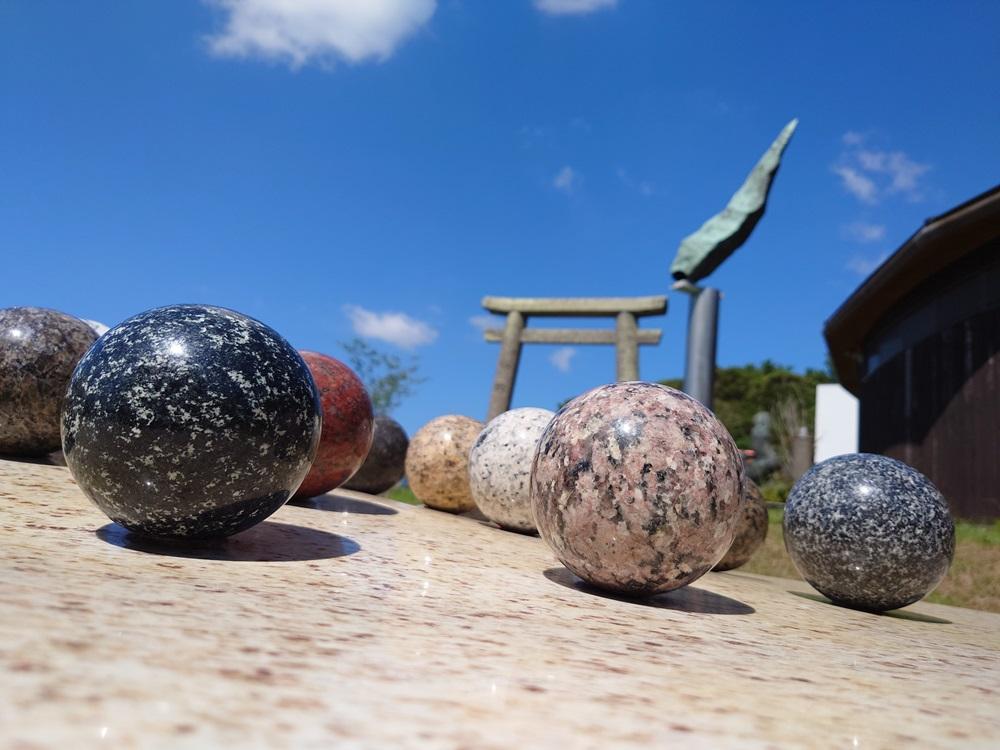
Walking the streets of Makurazaki, one notices contemporary art objects here and there. Although Makurazaki is a very small city, there are a variety of three-dimensional works of art scattered along the main streets. In fact, Makurazaki City is engaged in urban development under the name of "Blue Sky Art Museum. A total of 100 works are exhibited in nine locations, including major streets such as City Hall Street and Chuo Street, and the grounds of the city's cultural resource center, "Nammekan".
This is such a large number of works, and yet it is a collection of works by young artists from all over Japan. In fact, Makurazaki City has held the "Kaze no Geijutsu Ten (Art of the Wind)," a nationwide public exhibition of contemporary art, for 10 years from 1989 to 2013. The jury was composed of eminent members, including the late Gyoji Nomiyama, a Western-style painter. Since then, Makurazaki has held the "Makurazaki International Art Award Exhibition" and continues to "revitalize the town through contemporary art.
Three-dimensional works of various materials, shapes, and sizes can be found here and there. They give visitors the pleasure of appreciating art while strolling through the city. Incidentally, the statue of a mother and child peddling dried bonito flakes at Makurazaki Station is one of the works in the Blue Sky Museum of Art. In the premises of "Nammeikan," there are 12 works, including "Ten no Uo (Heavenly Fish)," which won the grand prize at the 1st Kaze no Geijutsu Exhibition, "Makurazaki: Living on this Land - Valuable Life," the 100th work created jointly by the artist and citizens, and "Kaze no Sail (Sail of the Wind). Makurazaki is not only a town of dried bonito flakes. We were reminded that it is also a nationally valuable city of art.
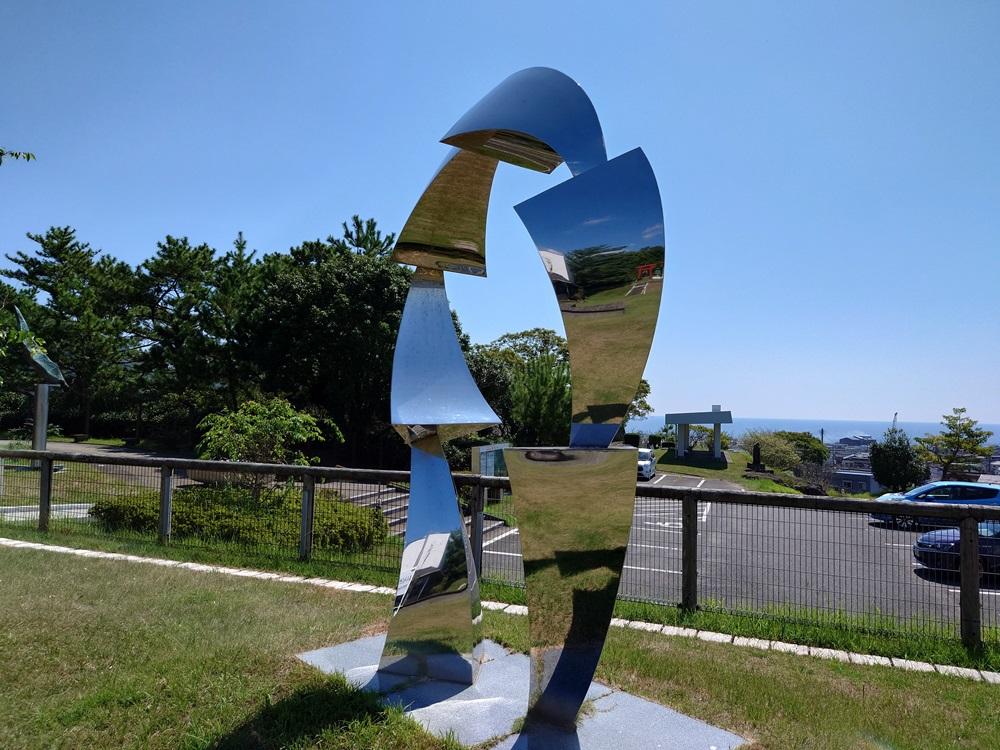

If you want to eat in Makurazaki, you should try bonito dishes! No, you can't leave out the Kagome Pork Cuisine!
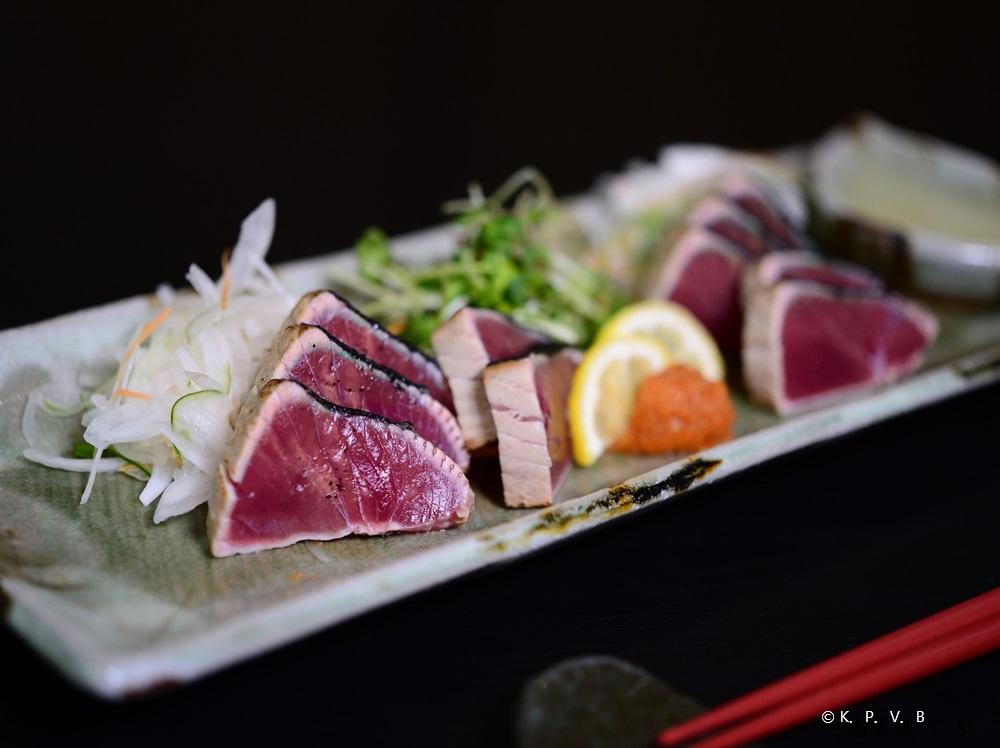
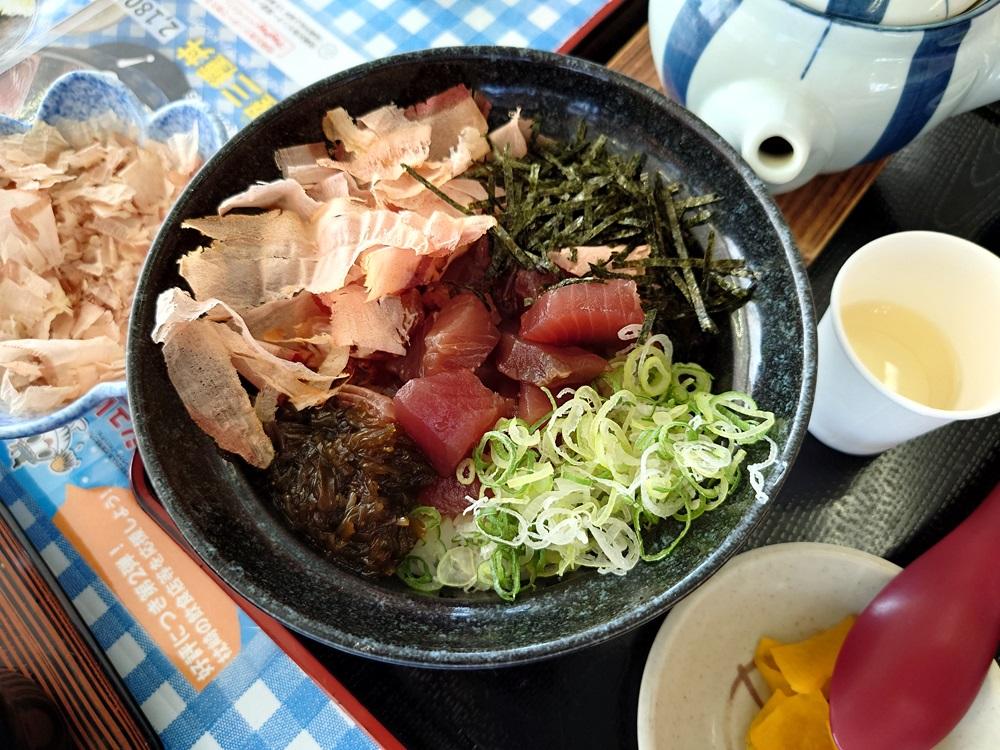
A walk will make you hungry. Makurazaki is famous for its bonito cuisine. Don't talk about Makurazaki without trying bonito. The peak of the skipjack fishing season is from February to May, but in fact skipjack is also landed from mid-September to November. Fresh bonito should be enjoyed as tataki. In addition, restaurants in the city offer a local gourmet dish called "Makurazaki bonito funandome-meshi" (Makurazaki bonito funandome-meshi). The common rule is to top white rice with bonito fillet or tataki and karebushi (dried bonito flakes), then pour a soup stock made of Makurazaki bonito flakes and kombu (kelp).
At the Makurazaki Minato Shokudo (Makurazaki Minato Restaurant) at the Makurazaki Fish Center, which was renovated in the spring of 2024, you can have as much "oiki-katsuobushi" (dried bonito flakes) as you like in this funenin-meshi. A bowl of rice topped with bonito fillet, chopped green onion, chopped seaweed, seaweed tsukudani, and honkare bushi is topped with hot dashi broth. The aroma of dried bonito flakes spreads in the air and tickles your nostrils. The flavor is further enhanced by the addition of additional dried bonito flakes. The dashi broth is also free to drink! After the meal, it is a must to buy dried bonito flakes at the souvenir store.
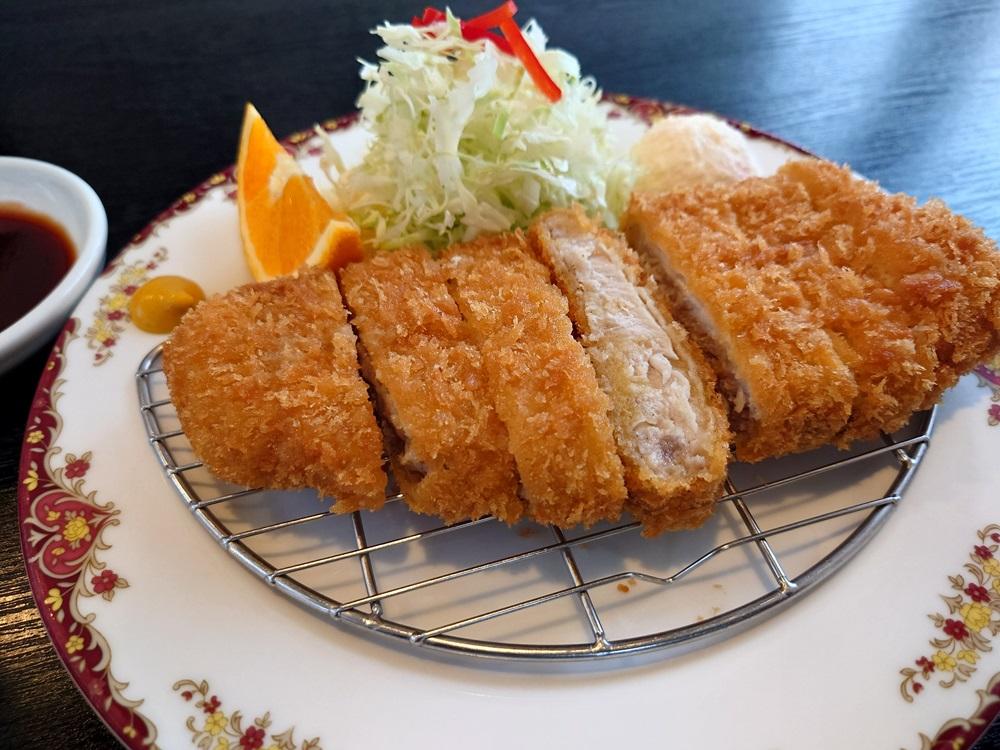
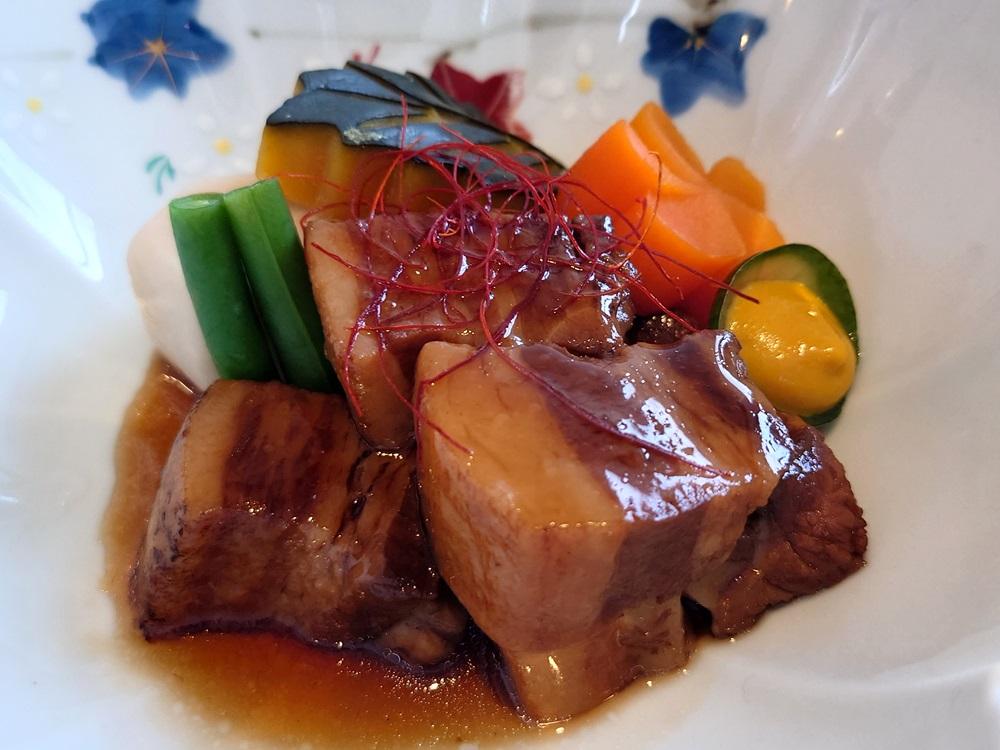
Now, there is one more hidden specialty of Makurazaki, a specialty known only to those in the know. It is Kagobuta. Kagoshima is known for its Kurobuta (black pig), and Kagomebuta is a true Kurobuta, and the first branded pig in Japan. In the immediate postwar period, pigs shipped from Kagome Station on the Nansatsu Railway were labeled "Kagome" and shipped to Tokyo, where they quickly gained a reputation for the quality of their meat. Shikagome" was the name of Makurazaki until the Edo period (1603-1867), and Nansatsu Railway Shikagome Station was adjacent to the current JR Makurazaki Station.
Time has passed, and today there is only one farm in the city that raises pigs under the "Kagome Pork" brand. Of course, it is a member of the Kagoshima Kurobuta Pork Producers Association. There are only a few restaurants in the city that serve Kagome pork, but "Ajidokoro Ichifuku" near Makurazaki Station offers roast pork cutlets, stewed pork cubes, hamburgers, grilled pork with salt, and other dishes. The sweet, melt-in-your-mouth fat, tender meat fibers, and fluffy texture of the pork are just some of the things you can expect from Kagoshima Kurobuta pork. It is a true Kagoshima Kurobuta, after all! Of course, there is also the skill of being a well-established and famous restaurant in the city.
Makurazaki may seem unassuming, but it actually has a lot of depth.
Makurazaki City Cultural Resource Center Nammekan
| Location | 175 Yamate-cho, Makurazaki-shi, Kagoshima |
|---|---|
| phone | href="tel:0993-72-9998">0993-72-9998</a> |
| Hours. | 9:00-17:00 (last admission 16:30) |
| closed day | Mondays (or the following day if Monday is a national holiday) *Special exhibitions may be open all year round. Makurazaki City Cultural Resource Center Nammekan official website |
Makurazaki Fish Center
| Location | 33-1 Matsunoo-cho, Makurazaki-shi, Kagoshima |
|---|---|
| phone | href="tel:0993-73-2311">0993-73-2311</a> |
| Business Hours | 9:00-17:00 (11:00-14:00 for restaurant) |
| closed day | Irregular (3rd Wed. for restaurant) Makurazaki Fish Center official website |
Ajiro Ichifuku
| Location | 8, Higashi-honmachi, Makurazaki-shi, Kagoshima, Japan |
|---|---|
| phone | href="tel:0993-72-3347">0993-72-3347</a> |
| Business Hours | 11:00-14:00, 17:00-20:00 |
| regular closing day | indefinite Ajidokoro Ippuku official website |

